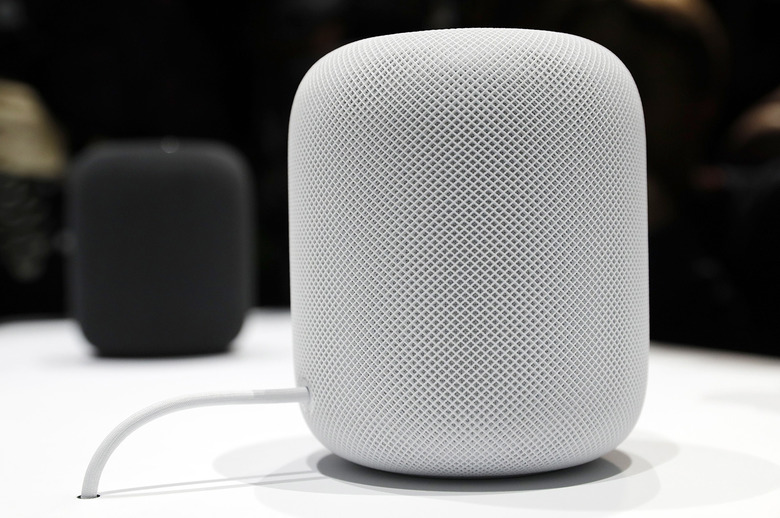Apple Says HomePod's White Stains 'Not Unusual,' Suggests Placing On 'Different Surface'
Apple has responded to numerous reports that the HomePod can stain some wooden surfaces with a resounding 'meh.' In an updated support article, Apple confirmed that the HomePod's silicone base can "diffuse oils" into certain wooden surfaces, but it says that it's "not unusual" for this to happen with speakers, and suggests that users put it somewhere else.
In other words, you're placing it wrong.
"It is not unusual for any speaker with a vibration-dampening silicone base to leave mild marks when placed on some wooden surfaces," the company said in an updated support article for the HomePod. "The marks can be caused by oils diffusing between the silicone base and the table surface, and will often go away after several days when the speaker is removed from the wooden surface. If not, wiping the surface gently with a soft damp or dry cloth may remove the marks. If marks persist, clean the surface with the furniture manufacturer's recommended cleaning process. If you're concerned about this, we recommend placing your HomePod on a different surface."
The problem only exists on wood surfaces that are treated with an oil or wax finish, since those finishes are still somewhat permeable to water. The HomePod shouldn't leave a mark on surfaces with a polyurethane finish. Oil and wax finishes are more common on food-contact surfaces, like kitchen counters or cutting boards, and wax finishes are common on antique furniture or items made from exotic hardwoods.
While it's true that other things with silicone bases may stain wood furniture (allegedly the Echo Dot suffers from a similar issue), the real question is why Apple decided to use silicone in the first place. Speakers and audio equipment most commonly use rubber bumpers to isolate vibration, and those can happily sit on any wooden surface for years without leeching oil into the finish.
